Computational Photography
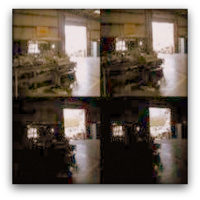 |
Super Resolution and
High Dynamic Range Imaging
Super-resolution
restoration combines multiple images to improve spatial resolution. By intentionally changing the
exposure parameters during the video capture, we can
introduce photometric diversity and obtain images with both higher dynamic
range and higher spatial resolution. [Read more] |
 |
High Dynamic Range Image
Registration
High dynamic range image requires registration of
differently exposed images. This is a challenging problem
because most optical flow estimation algorithms depend on
constant brightness assumption. In this paper, we estimate
dense motion field and non-parametric photometric mapping
from images with different exposures. [Read more] |
Coherent Imaging
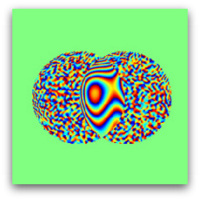 |
Multi-Transmitter Aperture
Synthesis
Multi-transmitter aperture synthesis increases the effective
aperture in coherent imaging by shifting the backscattered
speckle field across a physical aperture or set of
apertures. Through proper arrangement of the transmitter
locations, it is possible to obtain speckle fields with
overlapping regions, which allows fast computation of
optical aberrations from wavefront differences. In this
paper, we present a method where Zernike polynomials are
used to model the aberrations and high-order aberrations are
estimated without the need to phase unwrapping of the
difference fronts. [Read
more] |
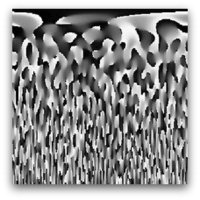 |
Sparse Aperture Coherent
Imaging
The resolution of a diffraction-limited imaging system is
inversely proportional to the aperture size. Instead of
using a single large aperture, small multiple apertures are
used to synthesize a large aperture. Such a multi-aperture system requires phasing
sub-apertures to within a fraction of a wavelength in order
to work. In this
paper, we present an approach to correct for piston, tip,
tilt, as well as rotational and translational errors. [Read
more] |
Inverse Problems
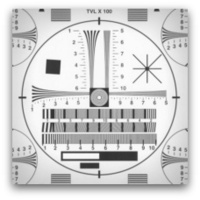 |
Super-Resolution
Imaging
Super-resolution image restoration is the process of
producing a high-resolution image (or a sequence of images)
from a set of low-resolution images. The process requires an
image acquisition model that relates a high-resolution image
to multiple low-resolution images and involves solving the
resulting inverse problem. We have conducted research
addressing several issues, including modeling, registration,
compression, and color sampling. [Project
page] |
 |
Denoising
Noise characteristics in an image depend on many factors,
including sensor type, pixel dimensions, temperature,
exposure time, and ISO speed. Most image denoising algorithms are optimized for
white Gaussian noise and may not work as well with real data. We
have developed a denoising framework that combines the strengths
of multi-resolution denoising approach and the bilateral filter. [Read more] |
 |
Deblocking
Popular
image and video coding standards are based on block processing of image data. This results in
block discontinuities in addition to other compression
artifacts. These artifacts could be reduced by using an
in-loop or post-processing deblocking filter. We developed
an adaptive deblocking filter that can effectively reduce
artifacts while preserving edges and texture. [Read
more] |
 |
Demosaicking
Demosaicking is a key step in a digital camera pipeline. We
developed a demosaicking algorithm that effectively uses
intra- and inter-channel correlations in an alternating
optimization scheme. [Read more] |
Computer Vision Tools
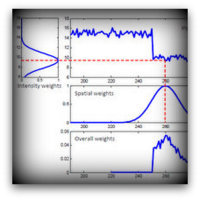 |
Fast Bilateral Filter
The bilateral
filter is used in a wide range of applications in image
processing and computer vision. One drawback of the bilateral
filter is the high computational complexity. In this project,
we present a fast bilateral filter implementation with good
speed and accuracy. The method uses multiple box kernels
and optimally combines them to approximate an arbitrary
domain kernel. [Read more] |
 |
Illumination Robust
Feature Extraction
Interest point
detection is a necessary task in many computer vision
applications. A good interest point detection
algorithm should be robust to geometric transformations, noise,
and illumination changes. We developed an algorithm that can
improve the illumination robustness of most interest point
detectors. We theoretically show that the algorithm improves the
illumination robustness of Harris corner detector; in our
experiments, the repeatability rate of the Harris corner
detector under large illumination changes is improved by around
25%. [Read more] |
|